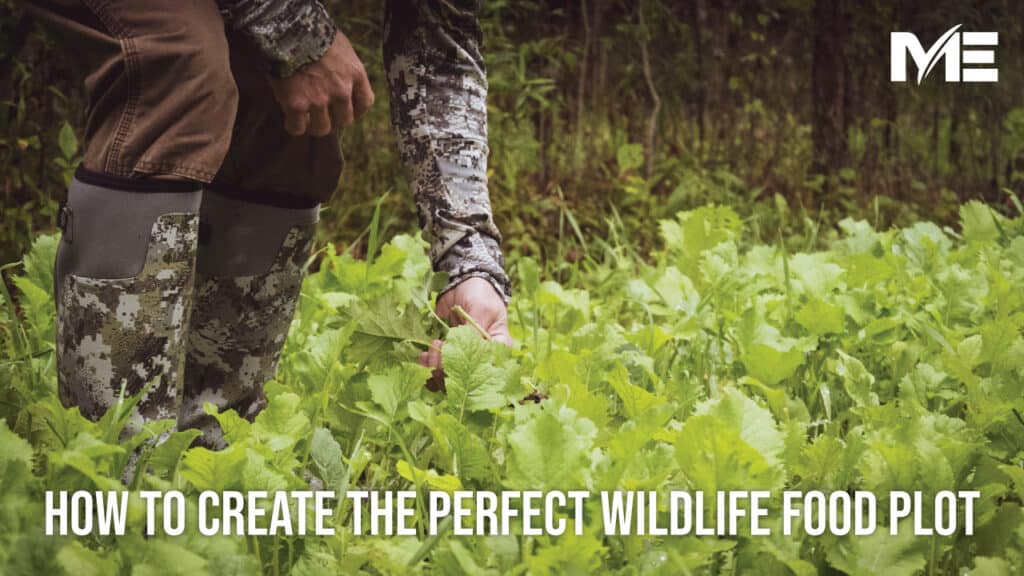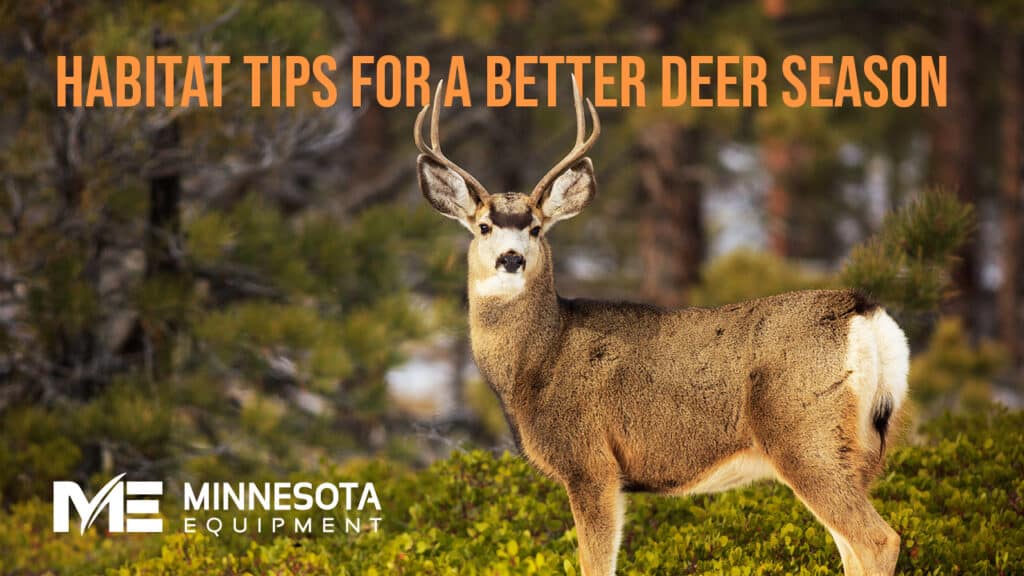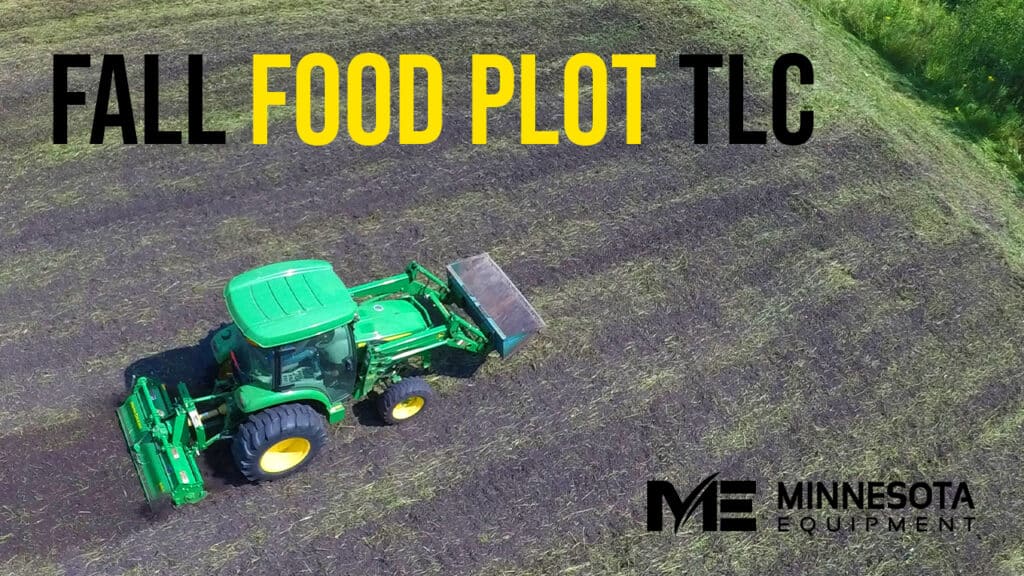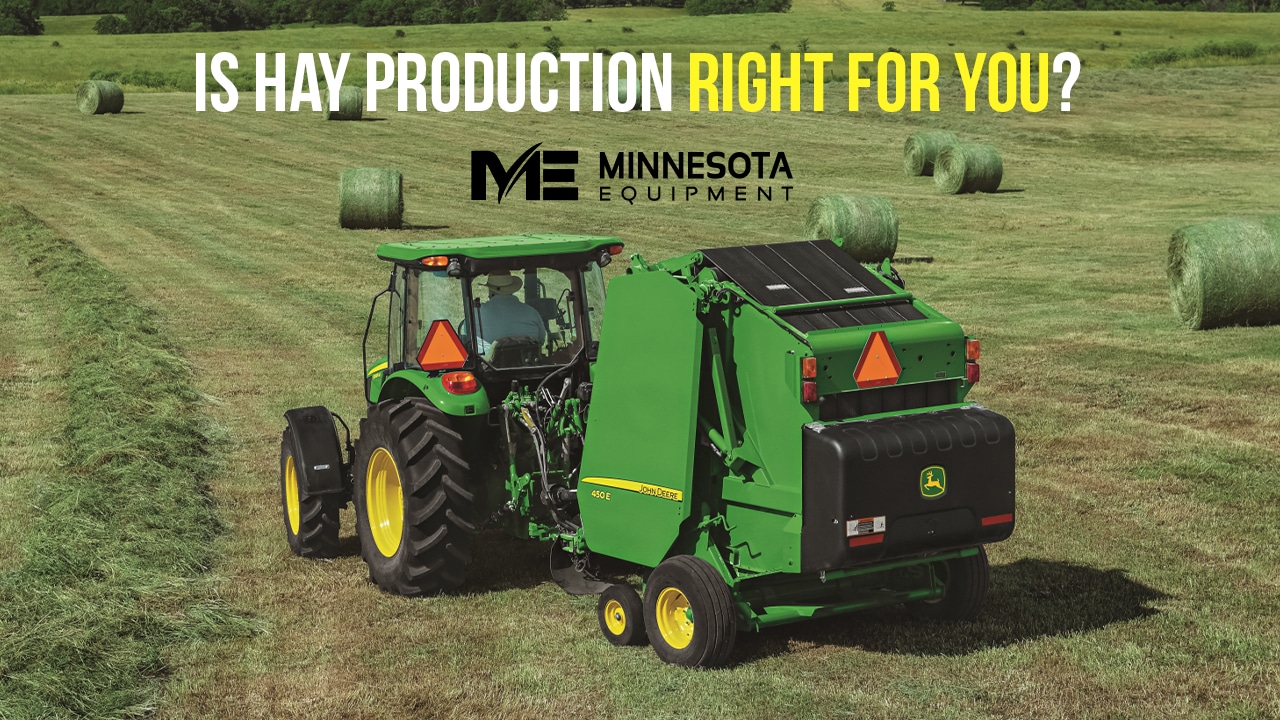
If you own a rural property and are contemplating getting started growing and baling hay, you’re not alone. The specialists at Minnesota Equipment routinely field questions from folks contemplating taking the plunge into the world of hay production.
“We get calls and visits from people wondering what’s involved in putting up hay for their horses or cattle,” says Mark Nordrum of Minnesota Equipment’s Isanti location.“Many of these folks own a small acreage and wonder whether it’s better to buy hay or bale it themselves, and what it takes to raise and harvest hay themselves.”
Nordrum draws from a lifetime of experience in agriculture to help them answer these questions. “There are many considerations to take into account,” he says. “And everyone’s situation is different. Our goal, as with every customer, is to guide them to the best possible outcome for their needs.”
There are many compelling reasons to make your own hay. You want to control the quality and nutritional value. You don’t want to pay high prices if supplies dwindle and costs skyrocket. You’d like to sell a few bales if you have a bumper crop. Or you just don’t want to depend on someone else to feed your prized livestock.
So, Is Hay Right For You?
Whatever the reasons, there’s plenty to think about when deciding if making hay is right for you. “Successful hay production takes planning, time, money, equipment, the right growing practices—and a little bit of luck,” Nordrum explains.
Two of the first considerations are how much hay you need and how much land you have to work with. This can include land you own or are able to rent. “If you have a few animals and only go through 50 or 100 small square bales or 10 or 20 round bales a year, you’re better off buying high-quality hay from a reputable supplier,” he begins. “Likewise, if you have 5 or 10 acres to commit to a hay crop, it’s probably not worth the investment in machinery to bale it yourself.”
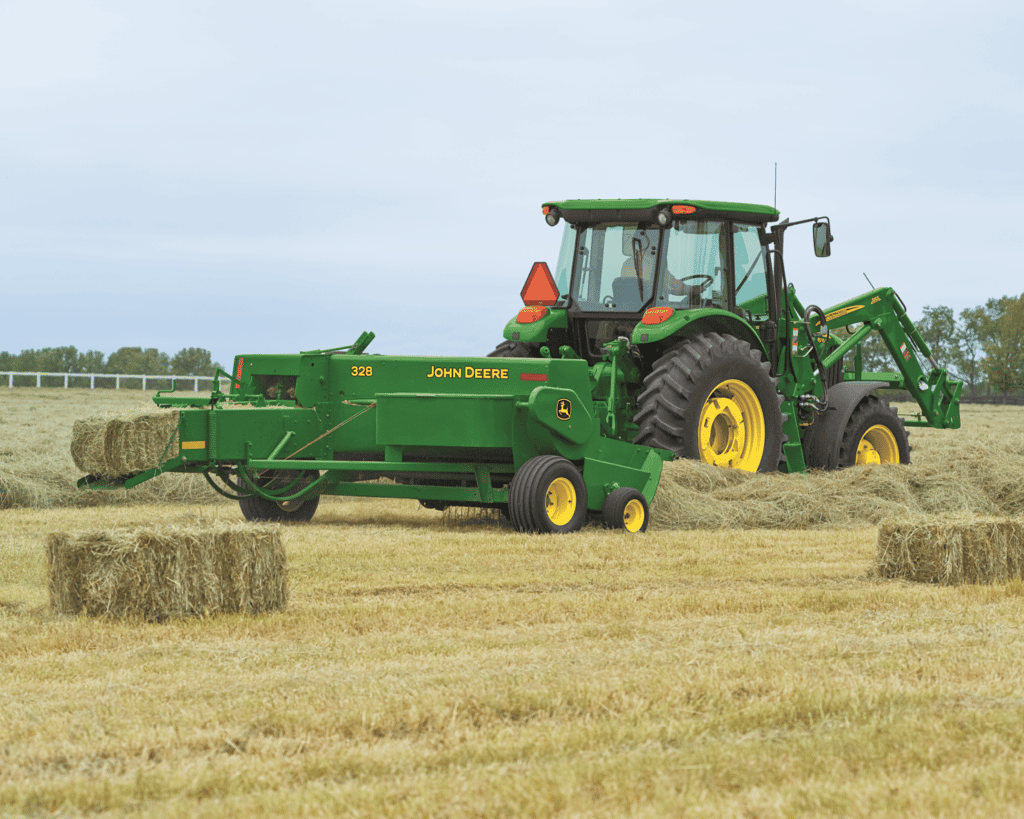
If your hay needs and acreage are larger, making your own hay might be a good fit. “But you still need to consider the expense of purchasing, maintaining, and repairing machinery, as well as the cost of tilling, seeding, and fertilizing your fields,” Nordrum says. “If you’re starting from scratch, these can add up in a hurry. Also think about the amount of time you have to cut, rake and bale the hay. If you have a full-time job, will you be able to take the necessary time off—when conditions are right—to put up your hay?”
Work With Minnesota Equipment
Nordrum points to many sources of information for would-be hay raisers to check out as they weigh their options. “Your local Extension Service can be a great resource; so can mills and co-ops that sell seed and fertilizer,” he says. “And of course, Minnesota Equipment is always happy to help you choose and care for the John Deere machinery to get the job done.”


 MyME
MyME

